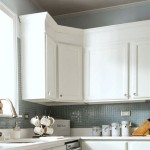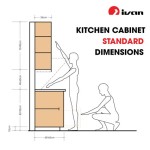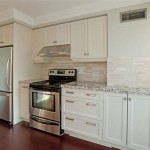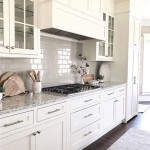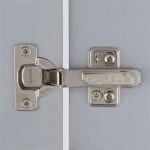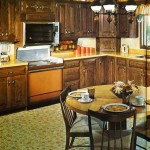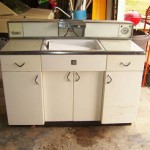Restoring Kitchen Cabinets: A Guide to Refreshing Your Space
Kitchen cabinets are a prominent feature in any home, and over time, they can show signs of wear and tear. From scratches and dents to fading paint, the appearance of your cabinets can significantly impact the overall aesthetic of your kitchen. Restoring your kitchen cabinets is a cost-effective way to revitalize your space without the expense of a complete remodel. With a little time and effort, you can give your cabinets a fresh look and enhance the value of your home.
1. Assessing the Damage and Choosing a Restoration Method
The first step is to carefully assess the condition of your cabinets. Determine the extent of the damage and identify any areas that require attention. This assessment will help you decide on the most appropriate restoration method. For minor cosmetic flaws such as scratches and scuffs, a simple cleaning and repainting process may suffice. However, for more significant issues like peeling veneer or water damage, more intensive restoration techniques may be necessary.
Consider the following factors when choosing a restoration method:
- The severity of the damage
- The desired aesthetic outcome
- Your budget and time constraints
Common restoration methods include:
- Repainting: This involves sanding the cabinets, priming them, and applying a fresh coat of paint. Repainting is a relatively straightforward process that can significantly refresh the look of your cabinets.
- Refacing: This involves replacing the cabinet doors and drawer fronts with new ones. Refacing offers a more substantial upgrade, allowing you to change the style and color of your cabinets.
- Resurfacing: This involves applying a new layer of material over the existing cabinet surface, such as laminate or veneer. Resurfacing can provide a more durable and long-lasting finish.
- Cabinet Replacement: In cases of severe damage or when you desire a complete overhaul, replacing the cabinets may be the best option. This is the most expensive solution but offers the most significant transformation.
2. Preparing the Cabinets for Restoration
Once you've chosen a restoration method, it's essential to properly prepare the cabinets. This involves cleaning, sanding, and preparing the surface for the new finish. Begin by removing all hardware, such as knobs, hinges, and drawer pulls. Thoroughly clean the cabinets using a mild detergent and warm water, ensuring to remove any grease, grime, or sticky residue. Allow the cabinets to dry completely.
Sanding is crucial for achieving a smooth and even surface for painting or resurfacing. Start with a coarse-grit sandpaper to remove any imperfections, then progressively use finer grits for a smoother finish. Be sure to sand in the direction of the wood grain to avoid creating unsightly scratches.
After sanding, wipe the cabinets with a tack cloth to remove any dust or debris. For repainting, priming is an essential step that provides a better adhesion for the paint. Apply a coat of primer that is compatible with your chosen paint. Allow the primer to dry completely before moving on to the next step.
3. Applying the Finish and Completing the Restoration
The final step is to apply the desired finish to your restored cabinets. This may involve painting, staining, or applying a protective sealant. If you're painting, choose a high-quality paint that is suitable for kitchen cabinets. Apply multiple thin coats of paint, allowing each coat to dry completely before applying the next. For staining, follow the manufacturer's instructions for achieving the desired color depth and finish.
After the paint or stain has dried, apply a clear sealant to protect the finish from scratches, stains, and moisture. This will help maintain the beauty and longevity of your restored cabinets. Once the sealant has dried, reattach the hardware to your cabinets and enjoy your newly revitalized kitchen space.
Restoring kitchen cabinets can be a rewarding DIY project. By carefully assessing the condition of your cabinets, choosing the appropriate restoration method, and following proper preparation and application techniques, you can transform your kitchen into a beautiful and functional space.

How To Refinish Kitchen Cabinets Diy

Cabinet Refinishing An 8 Step Guide For Pro Painters Ppc

The Fast Affordable Way To Upgrade Your Kitchen Cabinet Refinishing

Cabinet Refinishing N Hance

How To Refinish Cabinets Like A Pro

Cabinet Refinishing Guide

Refinishing Kitchen Cabinets Modern Refacing Made Easy Wisewood

Three Reasons To Refinish Your Kitchen Cabinets Better Than New Kitchens

Should I Paint Or Refinish My Kitchen Cabinets

How To Re Worn Kitchen Cabinets Without A Complete Overhaul The Seattle Times
Related Posts

